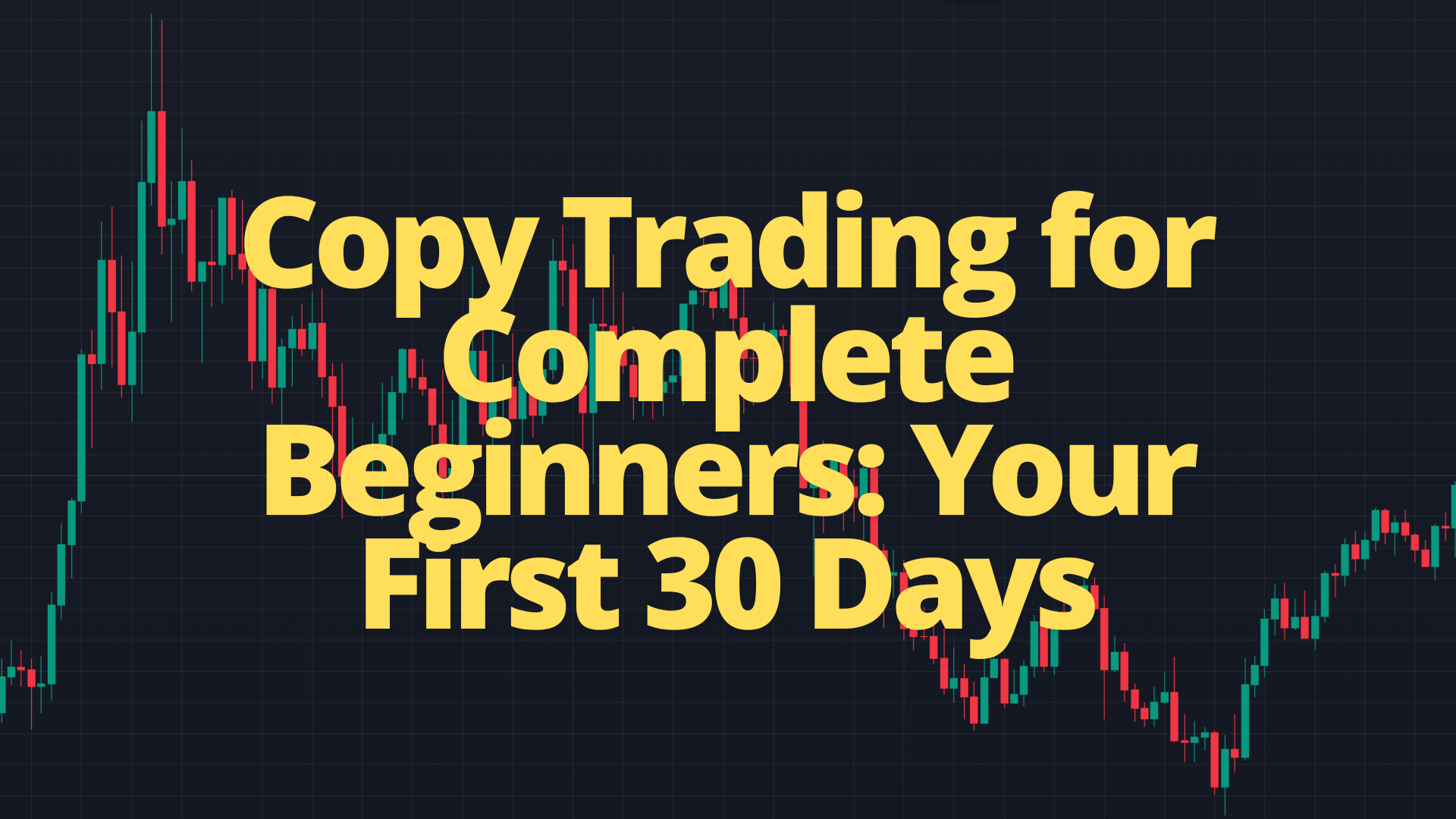Copy trading is a financial investment method that allows novice traders to automatically replicate the trading strategies and positions of experienced traders through specialized platforms. This investment approach enables beginners to participate in financial markets without extensive trading knowledge by mirroring the trades of successful traders in real-time.
Copy trading platforms connect inexperienced investors with professional traders, creating a systematic approach to portfolio management that reduces the learning curve for market entry. The method provides access to diversified trading strategies across multiple asset classes including forex, stocks, cryptocurrencies, and commodities through automated execution systems.
This comprehensive guide covers essential copy trading fundamentals, platform selection criteria, risk management protocols, and performance evaluation methods for your first 30 days of copy trading experience.
What is Copy Trading and How Does Copy Trading Work?
Copy trading functions through automated software that connects your trading account to selected professional traders’ accounts. When the professional trader opens, modifies, or closes a position, the copy trading system automatically executes identical trades in your account proportionally to your allocated capital.
The copy trading process involves three core components: signal providers (experienced traders), copy trading platforms (technology infrastructure), and followers (investors who copy trades). Signal providers execute trades based on their market analysis, while the platform’s algorithm replicates these trades across all connected follower accounts within milliseconds.
Copy trading platforms charge fees through spreads, commissions, or performance-based payments to signal providers. Most platforms offer customizable settings for risk management, including maximum trade size, stop-loss levels, and daily loss limits to protect follower investments.
How to Choose the Best Copy Trading Platform for Beginners
Dextrabot provides an ideal copy trading environment for beginners through its automated signal provider selection algorithm and comprehensive risk management tools. The platform offers verified trader performance data with real-time statistics, allowing new investors to make informed decisions based on historical trading results and risk metrics.
Dextrabot features include automated portfolio diversification across multiple signal providers, customizable risk parameters for individual trading styles, and educational resources specifically designed for copy trading beginners. The platform’s user-friendly interface simplifies trader selection and portfolio management while maintaining professional-grade risk controls for capital protection.
Copy Trading Risk Management: Essential Rules for Your First Month
Risk management determines long-term copy trading success through capital preservation and drawdown control. Allocate maximum 5-10% of total investment capital to copy trading activities during the initial learning phase to limit potential losses while gaining market experience.
Fundamental risk management principles include:
- Diversification across multiple signal providers – Follow 3-5 different traders with varying strategies and asset focus
- Position sizing limits – Risk maximum 2% of account balance per individual trade
- Stop-loss implementation – Set account-level stop-loss at 20% maximum drawdown
- Regular performance monitoring – Review trader performance weekly and adjust allocations accordingly
Avoid copying traders with inconsistent performance history, excessive leverage usage, or limited transparency in trading methodology. Successful copy trading requires patience and systematic approach rather than pursuing quick profits through high-risk strategies.
How to Select Profitable Traders to Copy
Trader selection involves analyzing performance metrics, trading consistency, and risk-adjusted returns over extended periods. Focus on signal providers with minimum 12-month verified track records showing consistent profitability across different market conditions.
Key trader evaluation criteria:
- Maximum drawdown below 15% indicates effective risk management
- Profit factor above 1.5 demonstrates positive risk-reward ratios
- Monthly consistency with 70%+ profitable months shows reliable performance
- Average trade duration matching your investment timeline ensures strategy alignment
Examine trader communication frequency, market commentary quality, and response to follower questions. Professional signal providers maintain transparent communication about their trading approach, market outlook, and position management strategies.
Review trader portfolio diversification across asset classes and geographic markets. Diversified traders typically demonstrate lower volatility and more stable returns compared to single-market specialists during adverse market conditions.
Copy Trading Performance Tracking and Optimization
Performance evaluation requires systematic monitoring of individual trader contributions, overall portfolio returns, and risk-adjusted metrics. Track key performance indicators weekly including total returns, maximum drawdown, Sharpe ratio, and win rate percentage.
Essential performance metrics for copy trading portfolios:
- Return on Investment (ROI) – Total percentage gains relative to initial capital
- Maximum Drawdown – Largest peak-to-trough portfolio decline during the period
- Sharpe Ratio – Risk-adjusted returns measuring excess return per unit of volatility
- Calmar Ratio – Annual return divided by maximum drawdown for risk assessment
Maintain detailed trading logs recording allocation changes, trader additions or removals, and reasoning behind portfolio adjustments. This documentation provides valuable insights for strategy refinement and performance improvement over time.
Common Copy Trading Mistakes to Avoid in Your First 30 Days
New copy traders frequently make emotional decisions based on short-term performance fluctuations rather than maintaining systematic investment approaches. Avoid frequent trader switching, over-allocation to recent top performers, and neglecting risk management protocols during initial trading periods.
Critical mistakes that reduce copy trading success:
- Chasing recent performance – Adding funds to traders after winning streaks often coincides with performance reversals
- Insufficient diversification – Concentrating investments in single traders or correlated strategies increases portfolio risk
- Ignoring drawdown periods – Stopping successful traders during temporary losses eliminates long-term profit potential
- Overleveraging accounts – Using excessive leverage amplifies both gains and losses beyond acceptable risk levels
Focus on gradual portfolio building with systematic trader evaluation rather than pursuing aggressive growth strategies. Successful copy trading requires discipline, patience, and adherence to predetermined risk management rules regardless of short-term market fluctuations.
Remember that copy trading success requires continuous learning, systematic approach, and disciplined risk management throughout your trading journey.
